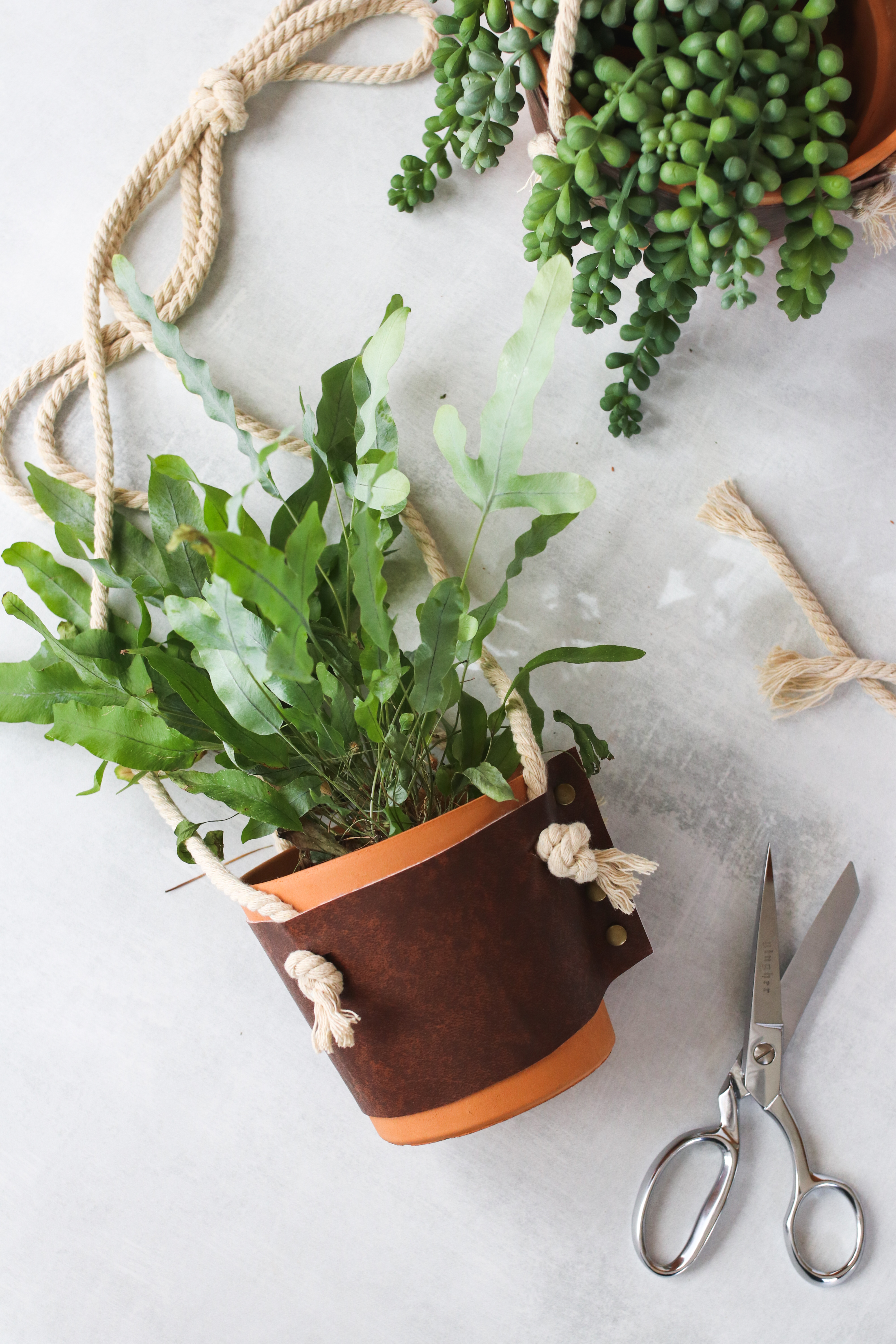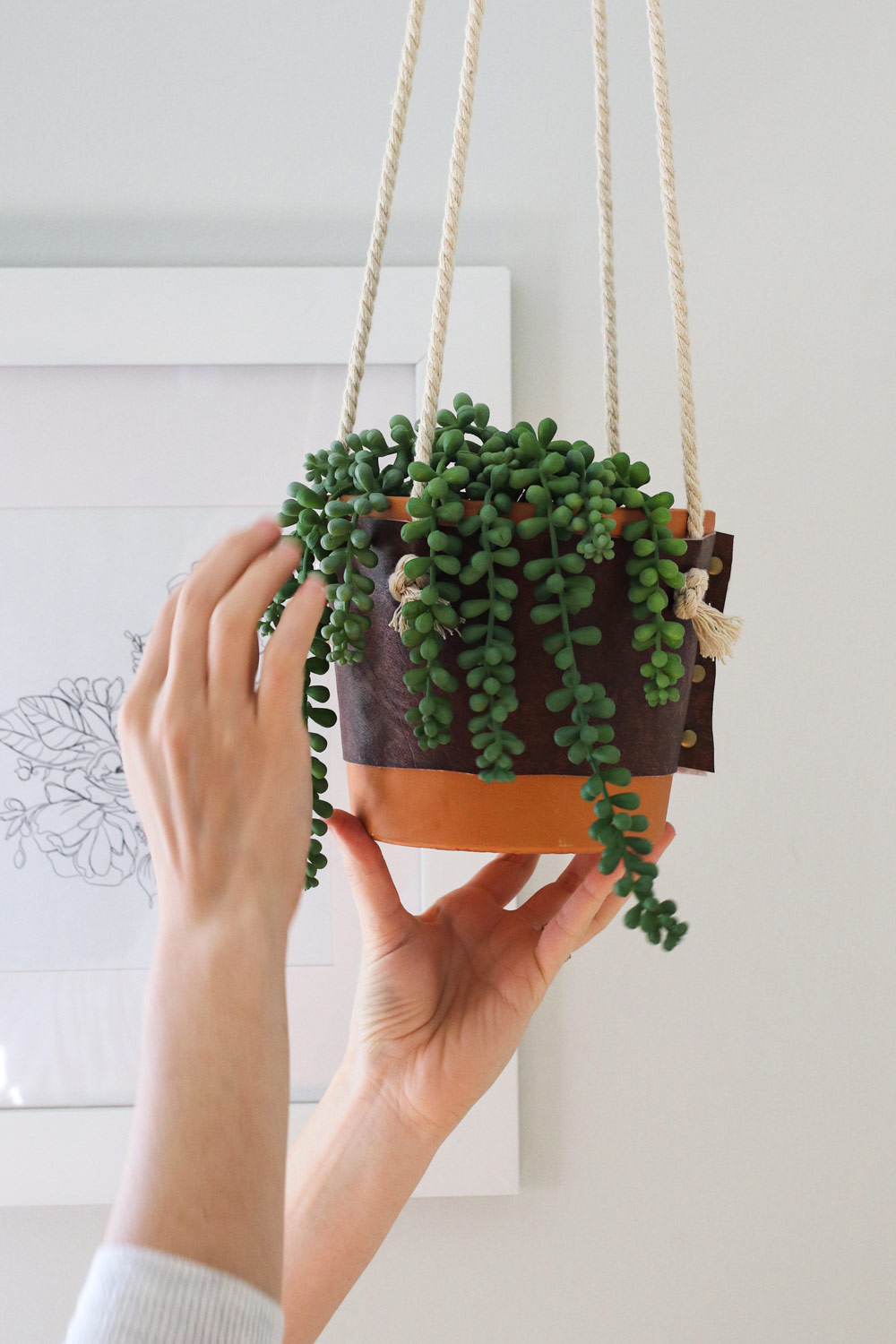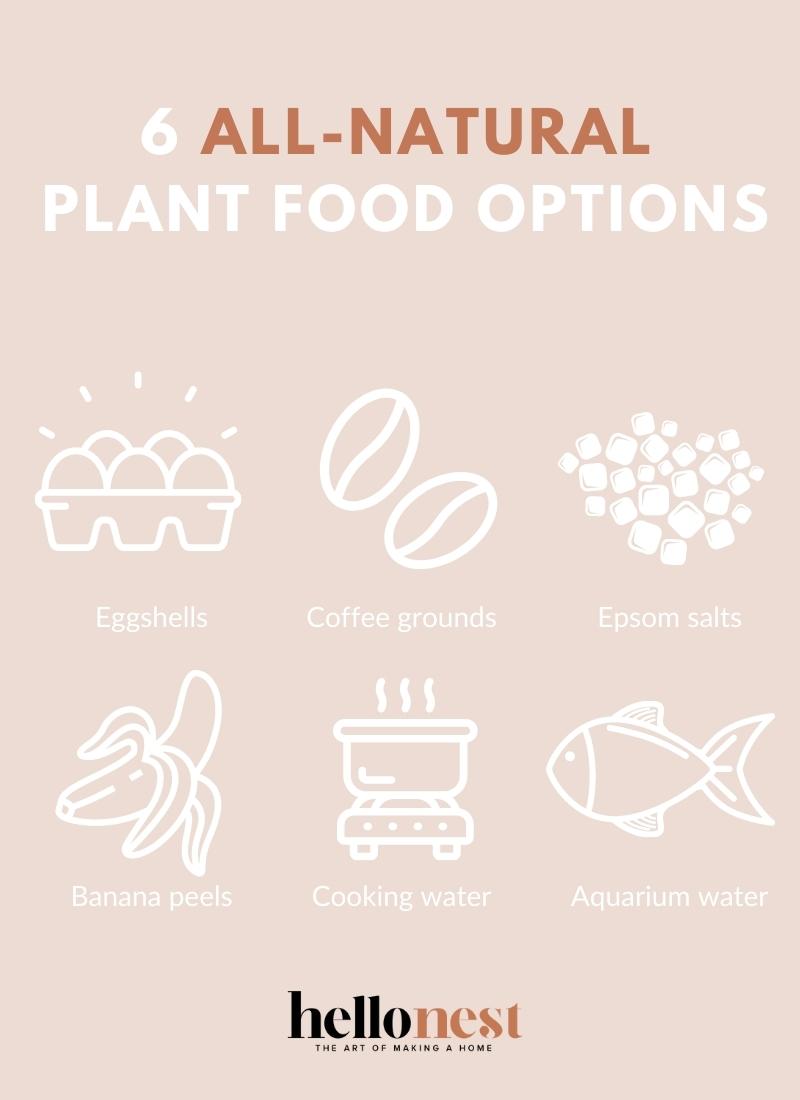If you want healthy, robust house plants, you’ll not only need to water them and set them in light levels according to their particular needs, you’ll also need to know how to feed them properly, which can feel overwhelming if you’re newer to plant care. We’ve put together a little run-down to help you find your way around what kind of houseplant food to use and when to use it, as well as some tips on nourishing your plants naturally with items you may already have around the house.
Types of houseplant food
Fertilizers are made up of the essential nutrients that help to keep your plants healthy. The three most important nutrients are nitrogen (for healthy leaves), phosphorus (for blooms), and potassium (for strong roots), and this N-P-K ratio is the 3 part number you’ll find on most fertilizer products.
Your green, leafy houseplants can thrive with a balanced N-P-K number, but your flowering plants will need a higher phosphorus number. If you’re buying a pre-made fertilizer from the store, be sure that it’s intended for indoor houseplants.
If you’ve recently repotted, or have topped up your pots with fresh fertilizer-enriched potting soil, you may not need to add food for a while. But if your plants haven’t had access to fresh nutrients in a few months, it’s time to get feeding.
3 different modes of fertilizer delivery:
—Liquid drops that you add to the water
—Granular which you sprinkle around
—Slow-release pellets or spikes that you press into the soil, allowing you to fertilize less often.
Choose a fertilizer that’s made from natural ingredients (read the labels!) which is preferable to synthetical chemicals. My father is an avid gardener indoors and out, and he prefers liquid fertilizer for indoor plants, as it’s easy to control the amounts and even distribution.
If you have a variety of categories of houseplants (such as succulents, palms, flowering tropicals, etc.), a quick internet search will let you know the type of fertilizer that’s going to be best for you, but in a pinch, an all-purpose natural liquid fertilizer meant for indoor plants will have you covered.
When to fertilize
Plants have a natural growing cycle, and need to be fed accordingly.
Winter
In the winter, even when kept indoors, plants will slow their growth and use this time to rest, and shouldn’t be fed.
Spring
In the spring when you notice new growth, it’s time to start feeding, but know that too much fertilizer can damage or even kill your plants. Start by adding it gradually, diluting the fertilizer by half of its recommended amount until the summer when your plant hits its peak growing season.
Summer
During the summer you’ll want to follow the product’s instructions on dilution and frequency.
Fall
When autumn rolls around, cut back and halve the dilution once again, until end of fall when they return to dormancy.
6 all-natural houseplant food options
Another (easy and natural!) way to boost the overall nutrition of your houseplants is by adding in a few key kitchen cast-offs to the soil or your water:
1. Eggshells
Rinse any used eggshells, crush them up and add them to boiling water, allowing them to leach overnight. Strain the shells and use the cool, calcium-enriched water on your plants to help strengthen their root development. Note that calcium lowers pH, so it’s not a great choice for plants that need more acidic soil.
2. Coffee grounds
Add your used coffee grounds to your plants to add a boost of nitrogen as well as to help aerate the soil. While dry, unused coffee is low in pH and can make the soil too acidic for some plants, used coffee grounds is neutral and safe for most.
3. Epsom salts
If the leaves of your plant are turning yellow in between the green veins on the leaves, it may be deficient in magnesium which can be supplemented by adding in some Epsom salts. Add 1 tablespoon of Epsom salts to 1 gallon of water, and use this to water the affected plants once per month during their growing season.
4. Banana peels
Banana peels have nitrogen, magnesium, and phosphorus, and are great additions to the soil of your house plants. Simple chop up a peel and bury it under a top layer of soil. You can also blend the peels with water and pour the emulsion onto your plants.
5. Cooking water
Save the water you’ve used to boil your veggies and beans. Allow it to cool completely, and use this to water your plants. They’ll love the extra nutrients that have leached out of the veggies, which has a similar benefit to adding compost directly into the soil.
6. Fishy business
I hesitate to add this onto the list simply because of my scent memories of growing up in a house where fish emulsion was sprayed all over our houseplants (yes, it smells exactly as you’d think). But it is also one of the best options for indoor plants as it is natural and can be used as an all-purpose choice.
If you have an aquarium, you can use the dirty aquarium water to feed your plants, as fish excrete potassium, nitrogen, ammonia, and phosphorus, all of which are great for your greens (note: this does not apply to salt water or chemically-treated tanks.) Since these nutrients will be well-diluted, you can use it every time you water your plants during growing season, without worrying about specific chemical ratios or watering schedules.
With a little basic know-how, your house plants will be well-fed and thriving! Do you have a favorite natural houseplant food tip or trick? Let us know!
5


Leave a Reply